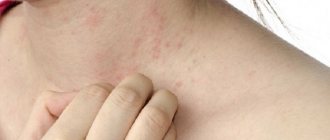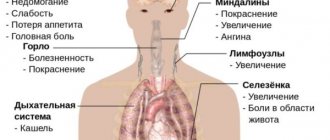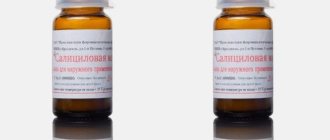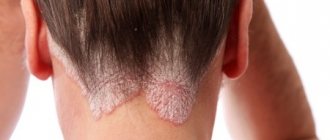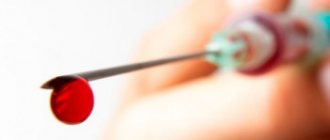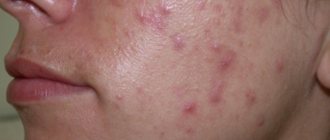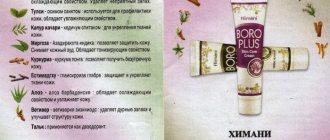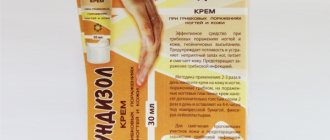Out of ignorance, psoriasis and parapsoriasis can be confused, but only a competent specialist can differentiate these two diseases and prescribe effective therapy. Using a set of methods will help you get rid of the symptoms of the disease.
Currently, medicine knows many skin pathologies. Some of the diseases are quite harmless and do not require special treatment, but there are also those that do not go away spontaneously and can even provoke various complications. Such diseases include parapsoriasis.
What is this pathology?
This disease is a little-studied disease; doctors have not yet fully figured out the mechanism of occurrence of the pathology and the causes that provoke it. Even before the beginning of the 20th century, this disease was quite rare; now the incidence of parapsoriasis is growing every year.
Many skin pathologies are characterized by the presence of rashes. Only a specialist can differentiate the disease and make an accurate diagnosis.
This pathology combines several groups of dermatosis that have common signs and characteristics, and first of all, these are superficial rashes on the skin.
Provoking factors of the disease
There are still no precisely established reasons that contribute to the development of pathology. The mechanism of development of the disease is under study. The causes of parapsoriasis, according to most dermatologists, are as follows:
- Infectious diseases: most often tuberculosis, syphilis, influenza, sore throat, streptococcal infection.

Even ordinary flu can provoke the development of parapsoriasis
- Exposure to allergic agents.
- Problems with the immune system.
- Poor environmental conditions.
Need to know! The development of parapsoriasis can occur against the background of gastrointestinal infections, kidney pathology, liver disease and joint disease.
Varieties of forms of parapsoriasis
In the presence of parapsoriasis, the symptoms, as well as the treatment of the disease, will depend on the form of the disease, and there are several of them:
- Guttate parapsoriasis . Small nodules or teardrop-shaped papules appear on the patient’s body. This type of pathology can occur in acute or chronic form. Most often diagnosed at a young age. In addition to the skin, rashes can also appear on the mucous membranes. The chronic form can last for years; in the hot season there is a noticeable improvement.
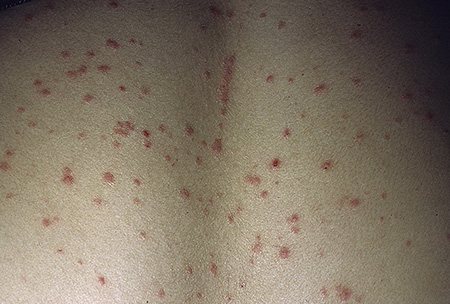
When small rashes appear, many do not pay attention to them, but these may be the first symptoms of a serious illness
- Plaque parapsoriasis manifests itself as rashes in the form of plaques, with a scaly surface on top. If the formations are small, then they say that it is small plaque parapsoriasis, but there is also another form - large plaque parapsoriasis. The first form is more often localized on the sides of the body, and the formations do not cause concern, while the second form prefers the extremities; the rashes itch and cause discomfort to the patient. In winter, the disease usually worsens, and in summer it goes into remission.
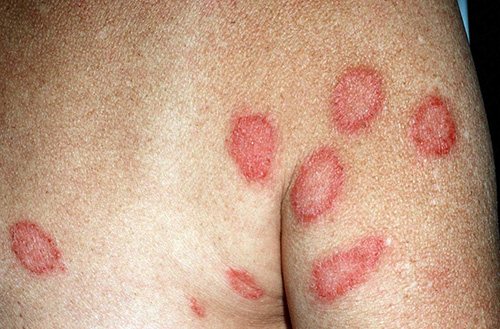
The appearance of plaques of different sizes on the skin can be confused with eczema or other diseases, so you need to visit a specialist
- If flat formations with a shiny surface and small sizes appear on the skin, then they say that lichenoid parapsoriasis . Sometimes on such formations you can see a dent in the center. The formations often appear in the eye area, as well as on the torso and limbs. With this form of pathology, general weakness and enlarged lymph nodes are noted. The rash spreads quickly, even affecting the scalp.
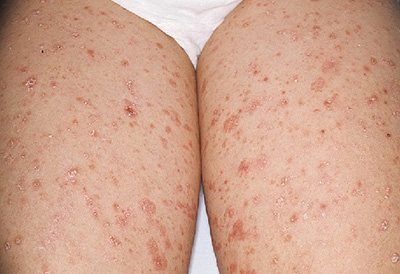
Do flat and red formations appear all over the body? This is a serious reason to consult a dermatologist.
- Acute parapsoriasis also has a second name - Haberman's Fly . This pathology is characterized by the polymorphism of the rashes; they appear in large numbers and are localized almost everywhere. With this form of the disease, the patient's condition deteriorates sharply, a high temperature and enlarged lymph nodes are noted.
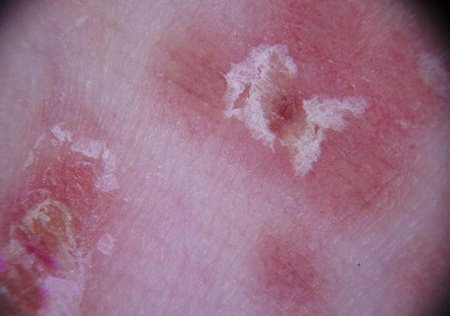
If there are red rashes, the temperature rises and the general condition worsens - this is already fraught with serious complications
Vitamin-containing products
In complex treatment for psoriasis, including diet, attention should be paid to the intake of essential vitamins with food:
B vitamins
With an insufficient amount of vitamin B, metabolic processes in the body are disrupted, which negatively affects the skin. To replenish vitamin B, you can eat wholemeal bread and buckwheat. These foods contain sufficient amounts of B-vitamin.
Ascorbic acid
Ascorbic acid is required to ensure good immune function and ensure elasticity of the vessel wall. The most vitamin C is present in bell peppers, rose hips, and kiwi.
Fruits for psoriasis are consumed without heat treatment, which leads to the loss of a significant part of ascorbic acid.
Zinc
The diet for parapsoriasis must provide a sufficient amount of zinc, which is involved in protein synthesis, which promotes the rapid regeneration of damaged skin. A sufficient amount of zinc is present in seafood, sesame seeds, and pumpkin.
Calcium
This substance accelerates regenerative processes, so it is necessary to add healthy foods for psoriasis in the diet, which contain calcium (ryazhenka, yogurt, yogurt, etc.).
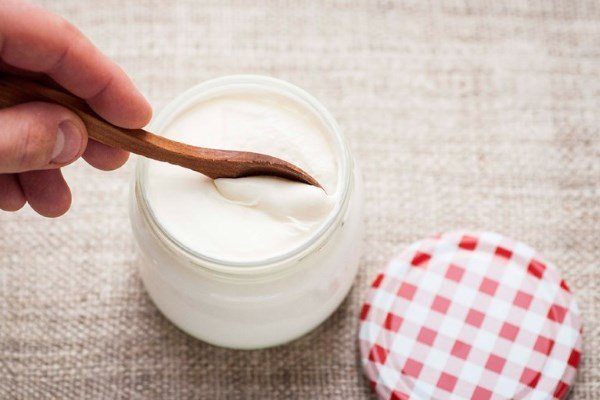
Vitamins E
This vitamin has a positive effect on the epidermis, alleviating external psoriatic manifestations. Adequate nutrition is especially necessary for women with psoriasis during pregnancy, since vitamin E has a positive effect on reproductive function.
When developing a menu for the week, the doctor clarifies in detail allergological predisposition and the presence of chronic diseases. After this, he selects an individual treatment regimen.
The diet is most effective and produces fewer complications when the sick person knows what not to eat with psoriasis.
Recommended table of dietary foods for psoriasis:
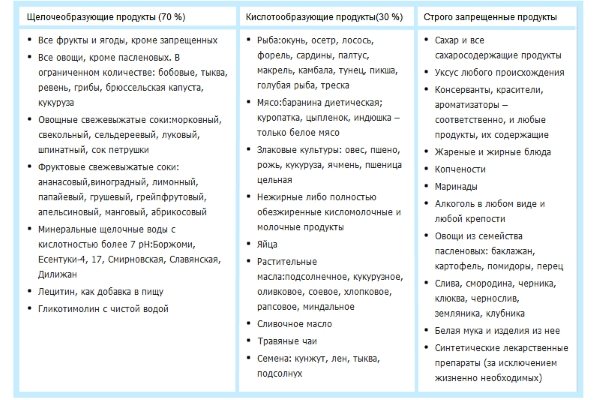
Prohibited foods for psoriasis are removed from the menu. You cannot drink alcoholic beverages, tea or coffee.
The permitted set must include all vitamins and microelements. The role of meat is especially important, where proteins and fats necessary for the body are present. The dietary meat set should include the mandatory consumption of rabbit, turkey and chicken. In addition, you should drink at least 2 liters of fluid daily.
How is parapsoriasis different from psoriasis?
To prescribe effective therapy for a disease, it must be differentiated from some similar pathologies. First of all, you need to know the differences between psoriasis and parapsoriasis. They are as follows:
- As psoriasis develops, bleeding areas form around the rash.
- Plaques in psoriasis have a scaly surface; in parapsoriasis, this rarely happens.
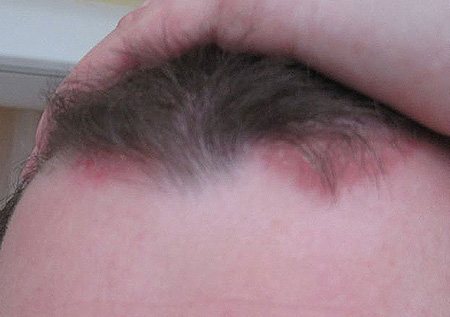
It can be difficult for the average person to distinguish psoriasis from parapsoriasis. Only a specialist can do this.
- Psoriasis is marked by severe itching.
- With psoriasis, even the nail plates can be affected.
Important! Parapsoriasis is rarely localized on the face and head, knees and elbows, and psoriasis loves these places.
Detailed menu for the week
The table details the diet menu for psoriasis for a week. Dishes can be combined in different sequences.
| Days of the week | Morning | Snack | Dinner | Snack | Evening |
| Monday | Oatmeal, boiled egg, herbal tea | Salad of celery, cucumber and greens | Borscht, steamed chicken fillet | Cottage cheese with fruit | Vegetable stew, homemade compote |
| Tuesday | Steamed omelette, black tea | Banana | Vegetable broth soup, steamed pollock fillet | Syrniki | Steamed chicken cutlets, fresh vegetables |
| Wednesday | Buckwheat, hard cheese, compote | Cottage cheese with prunes | Vegetable cutlets, turkey stew | Cabbage salad | Salmon with vegetables |
| Thursday | Pumpkin porridge, crackers, dried fruit broth | Mango | Ukha, buckwheat porridge, steamed chicken cutlet | Cottage cheese with raisins | Stewed zucchini and eggplant, meat cutlet |
| Friday | Oatmeal with milk, black tea | Apple | Vegetable stew, crackers, homemade compote | Glass of fermented baked milk | Beet salad with sour cream, steamed fish fillet |
| Saturday | Boiled egg, hard cheese, greens | Fruit salad | Borscht, meat pie, tea | Cottage cheese with 3-4 pcs. almonds | Millet porridge, fresh vegetables |
| Sunday | Pearl barley porridge with milk, black tea | Orange | Chicken broth, potatoes with stewed mushrooms | Baked apple | Salmon with vegetables |
Treatment of the disease
After clarifying the diagnosis, the dermatologist prescribes effective therapy, which includes several areas:
- Drug therapy.
- Physiotherapeutic methods of treatment.
- Correction of diet.
- Traditional methods of therapy.
- Spa treatment.
Important! Treatment of parapsoriasis should be comprehensive; this is the only way to achieve positive results. Therapy should begin with the elimination of all infectious diseases.
Drug therapy
If there is a diagnosis of parapsoriasis, treatment will depend on the type of pathology.
Guttate parapsoriasis is treated using the following medications:
- antiallergic (antihistamine) drugs, for example, Tavegil, Diazolin.
- Preparations containing calcium and its compounds: Calcimin.
- If the pathology is severe, then you cannot do without steroid hormones that are prescribed externally, you can use Prednisolone.
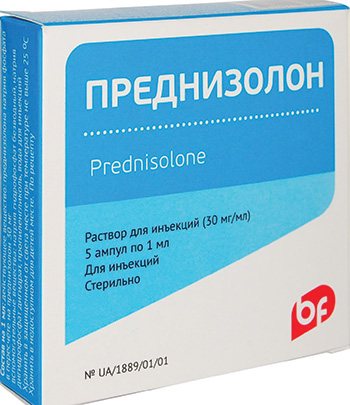
There are a lot of drugs that are simply necessary in the treatment of many skin diseases.
- Taking nicotinic acid will help in therapy; it can be taken in tablets or injected.
The acute form of the disease involves the use of:
- nicotinic acid, it normalizes blood circulation.
- Vitamin preparations, for example, Tocopherol, Retinol.
- Prescription of antihistamines is not excluded.
- Vascular agents are prescribed, for example, Teonicol, Complamin.
- Taking antibacterial agents, for example, Erythromycin, has a good effect.
If plaque parapsoriasis is observed, the treatment is as follows:
- corticosteroids, for example Prednisolone.
- B vitamins.
- Ascorbic acid.
- External use of sulfur-salicylic or naphthalan ointment.
Important. Therapy for the plaque form of parapsoriasis should be carried out only under the supervision of a gastroenterologist.
Treatment of the lichenoid form involves the use of:
- drugs from the group of corticosteroids;
- B vitamins;
- xanthinol nicotinate;
- antihistamines;
- antibiotics;
- in severe cases, immunosuppressants (Cyclosporine) are prescribed.
Physiotherapeutic procedures help in treatment
Physiotherapy will be a good help in treatment; the following procedures are recommended:
- Ultraviolet irradiation.
- Sulfur-carbon dioxide and iodine-bromine baths.
- Phonophoresis.
Factors in the development of the disease
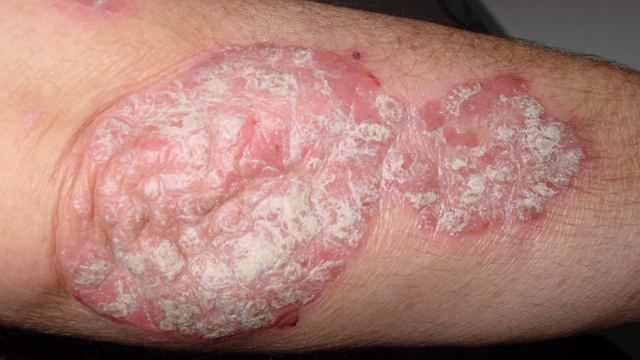
The causes of the disease have not been thoroughly studied and are unknown. For a long time, its origin was attributed to infectious diseases; it is known that the main provocative factor in the presence of parapsoriasis is a malfunction of the immune system, resulting in allergies.
In some cases, skin rashes are similar to syphilis, tuberculosis, disseminated tuberculosis, but their significant difference is that with parapsoriasis the structure of the blood vessels is disrupted (fragility and thinning occur). Such signs can be observed in diseases of an infectious nature (sore throat, smallpox, meningitis, influenza).
In an autoimmune reaction, viruses and allergens can cause the breakdown of the constituent substances of DNA cells, as a result of which T-lymphocytes are distorted. Antigens begin to stimulate the body, resulting in areas of inflammation on the skin. Often the manifestation of parapsoriasis is caused by the patient’s reduced immunity, disruption of the endocrine system, frequent respiratory diseases, and worms.
Detailed diets for psoriasis (reviews, food tables and menus)
It is important that the patient’s diet is balanced, varied and complete. Excessive consumption of foods high in proteins, fast carbohydrates and fats increases blood acidity. As a result, a huge amount of toxins accumulates and penetrates from the intestines into the blood. Since the kidneys and liver cannot cope with the task of increased complexity, the skin comes to their aid. As a result, the symptoms of psoriasis become more pronounced: itching and inflammation in the affected areas intensify.
Eliminating prohibited foods from a patient’s diet promotes a speedy recovery and reduces the symptoms of the disease.
A balanced diet for psoriasis is the key to a speedy recovery. If you have psoriasis, you should be especially careful about your diet. Below are recipes that can be used not only by those suffering from this disease, but also by adherents of a healthy diet. Steamed turkey cutlets are a great way to diversify the diet of a psoriasis patient.
Symptoms and forms of the disease
Dermatology identifies several forms of parapsoriasis, which differ in their symptoms:
- Spicy . It is characterized by rashes on the palms, face, and feet. The onset of the disease is sudden and does not cause a deterioration in the general condition of the patient. In some cases, lymphadenitis and fever appear. It can occur in people of different genders and ages; it is extremely rare at an early age. The completion of the disease is characterized by a decline in inflammation, the appearance of scars and degeneration into guttate parapsoriasis.
- Teardrop-shaped . A form that often occurs in young women. Rashes in the form of small blisters with an accumulation of scales in the center, which mainly affect the extremities (arms, legs), are rare on mucous tissue.
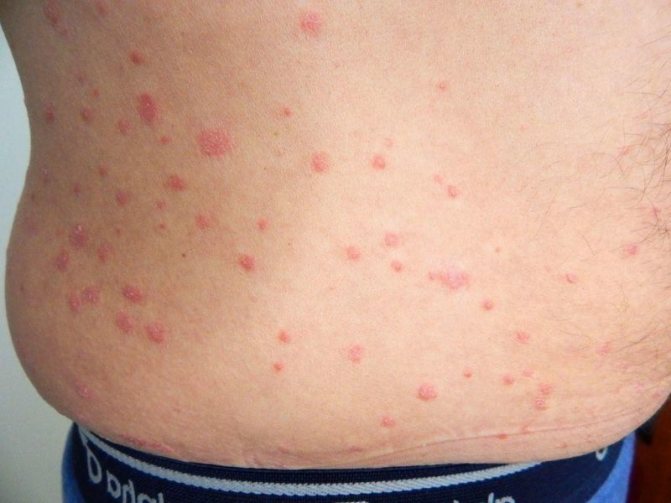
Guttate parapsoriasis has three precise symptoms:
- purpura - due to the fragility of the blood vessels, bleeding areas are formed when scraped;
- peeling - all flaky elements fall off even with partial scraping;
- wafer - a layer of scales is completely removed when the top layer is damaged.
In a state of remission, the rash completely disappears or appears as leukoderma - the appearance of spots different from the color of the skin.
- Plaque . This form is characterized by two types. Small plaque, which is benign in nature, and large plaque, prone to the formation of lymphomas. The clinical picture of plaque parapsoriasis appears as spots on the body, pink in color, sometimes with infiltration. The elements have an oval shape and do not merge into one focus of inflammation. Exacerbations are typical for the winter period. If itching occurs, do not confuse it with mycosis fungus. Mostly middle-aged males are susceptible to the disease.
- Lichenoid . It has a brown rash on the sides of the body and can spread to the eye area. It is rare, mainly in people of both sexes. Similarity of symptoms with signs of lichen planus.
Consequences
As a result of the lack of timely therapy, patients with parapsoriasis experience impaired permeability of capillaries and blood vessels. The presence of these disorders is quite clearly manifested in the teardrop-shaped form. Scars similar to smallpox may form in the area where the rash has disappeared. Adequate therapy gives positive results in the treatment of parapsoriasis.
Treatment
Parapsoriasis is characterized by a wave-like course (the pathological process can periodically subside and then worsen again), since it is chronic. The lull can have a long period if the correct treatment is prescribed, and the symptoms are observed in a mild form, the patient’s condition does not worsen.
To avoid a significant outbreak of the disease, it is necessary to follow the mandatory treatment recommendations. When treating parapsoriasis, complex therapy is provided, which consists of external medications (ointments, gels, aerosols) and tablet use.
A necessary condition for a favorable outcome of the disease is a specialized diet, physiotherapy and sanatorium treatment.
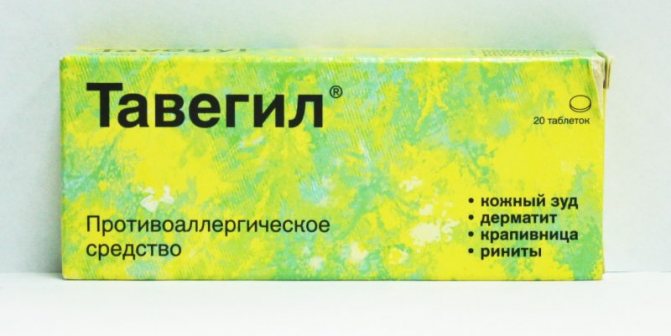
What should the patient's diet be limited in?
In order to have success in the fight against lichen, you need to remember that psoriasis is an insidious disease, and having it in your “baggage” you must strictly follow certain dietary rules.
It should be remembered that in the acute period the consumption of alcohol, tobacco and “harmful” products is strictly prohibited, and during periods of remission, perhaps occasionally allow a little from the list of prohibited products, but you should carefully monitor how the disease reacts to a particular product.
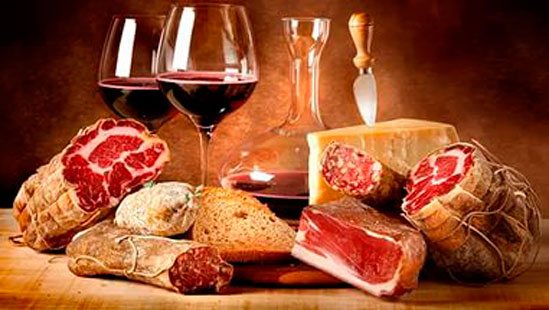
So, what is prohibited in the acute period and can be used in very limited quantities during periods of remission:
- fatty, smoked, salted
- citrus
- chocolate and sweets
- white bread and flour products made from wheat flour
- whole milk and high-fat dairy products
- honey
- eggs (especially the yolk)
- fruits, berries and vegetables that are red in color (tomatoes, sweet peppers, strawberries, cherries, cherries and others)
- spices, hot seasonings and sauces (mustard, horseradish, mayonnaise)
- onion, garlic, horseradish
- fatty meat and fish broths (including mushroom)
Various “body cleanses” should be avoided; fasting is unacceptable. Dishes should be prepared by boiling, baking, steaming or stewing, without frying. Without consuming these products during the acute period, you will notice a significant improvement in the condition of your skin.
Treatment method
Each form of the disease provides its own method of eliminating it.
- The drop-shaped form to relieve swelling and itching is treated with antihistamines (Tavegil, Zodak, Zirtek), drugs that increase calcium levels (Calcimin), and angioprotectors (Troxevasin). In severe cases, treatment with hormonal drugs (Diprospan, Prednisolone) and antibacterial drugs (Amoxicillin, etc.) is included.
- For the acute form, similarly to the teardrop form, nicotinic acid is used in combination with vitamins to improve blood flow. They use antibiotics (Erythromycin), antiallergic drugs (Claritin, etc.), drugs to improve the structure of blood vessels (Teonikol, etc.). To prevent scratching, mixtures with anesthesin are used.
- Patients with identified plaque and lichenoid forms must be registered at the dispensary and undergo regular treatment without fail. It is recommended to treat parapsoriasis of these forms with corticosteroids, vitamins B and C, take herbal baths, and use the climatotherapy method.
Food with healing properties
The diet for psoriasis (the table of products will be presented below) provides for a diet that will maintain a balance of acids and alkalis. Moreover, the diet should be nutritious.
Let's consider which products can cope with such a difficult task:
- Berries. The patient's skin will appreciate the effect of blueberries and lingonberries on the body. The fruits of sea buckthorn have proven themselves well.
- Fruits for psoriasis are an important component of the diet. However, you need to remember that some of them cause an allergic reaction. Therefore, the doctor should tell what fruits a particular patient can eat. We list the safest of them: watermelon, grapes, pineapple, apricot. Melon is very healthy, but it should be consumed with caution and in small portions.
- Almost all vegetables are safe for psoriasis patients. Green beans, carrots and cucumbers will bring the most benefits. But tomatoes, potatoes and bell peppers should be included in the diet to a minimum.
- Chicken and turkey meat should be eaten 2-3 times a week.
- You should eat fish as often as possible. It contains special acids that allow the body to function at full strength.
- Cereals are a filling and healthy food that is important to eat every day. Rice, wheat, buckwheat, oatmeal will fill the body with energy without harm to the skin.
- Dairy products will help replenish calcium reserves. Low-fat cottage cheese, milk and kefir should be eaten as often as possible. You should not overuse eggs, reducing their intake to 3 times a week.
- Oils made from sunflower, olive or flax. Healthy fatty acids help prevent inflammation and allergies. They are used not only to season salads, but also to be taken in pure form several times a day, one spoon at a time.
- Greens can be used for psoriasis in any form and quantity. This is a mandatory element of the diet.
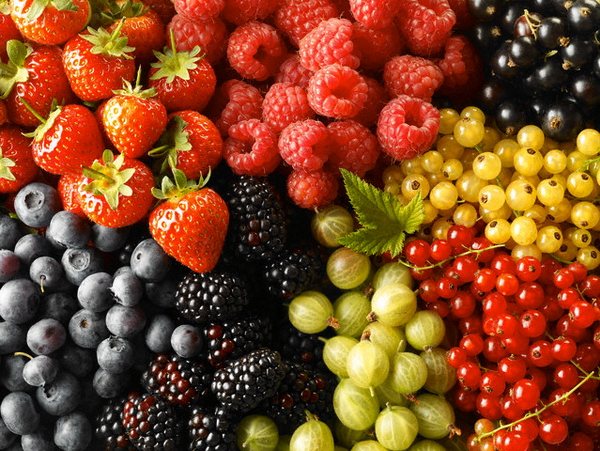
Berries
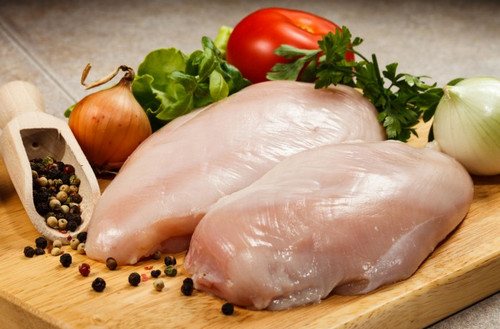
Chicken, turkey meat
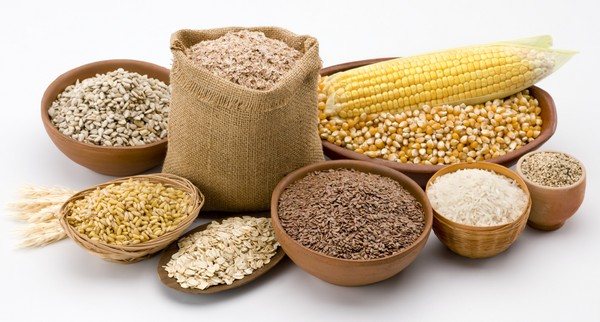
Cereals
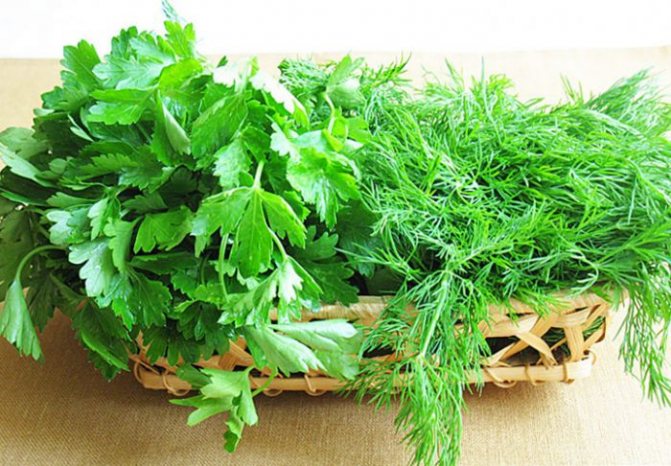
Greenery
Treatment of psoriasis is impossible without including plenty of fluids in the diet. Water consumption per day should be at least one and a half liters.
The menu for psoriasis should contain products that have a high content of vitamins and minerals.
The buckwheat diet for psoriasis is especially relevant, since this grain contains almost all the substances necessary for the body.
Zinc is useful for treating pathology. However, products cannot provide the required amount for the body. Its deficiency is especially acute on the elbows. Therefore, the doctor prescribes additional vitamin complexes containing this microelement during the diet.
Folk recipes
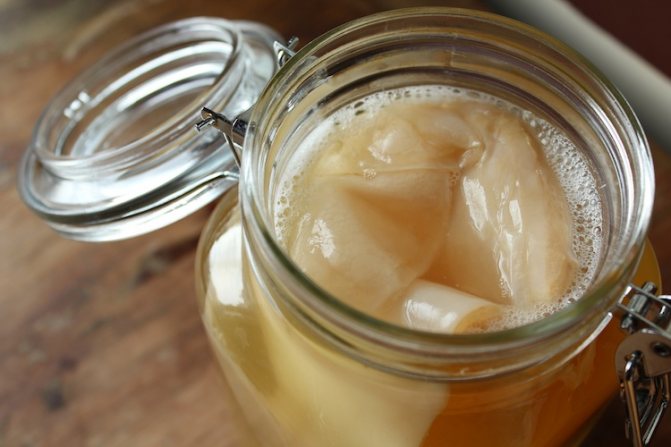
To cure parapsoriasis, there are many methods and recipes from traditional medicine. In this case, herbal decoctions, infusion of kombucha with the addition of honey are used, which are taken as tea.
For external use, lotions made from birch infusion, hernia juice, and unripe young nuts bring significant relief. You can use birch tar by applying it to the inflamed area.
It is important to choose the right remedy and start treatment at the very beginning of the disease in order to cure parapsoriasis.
Diet
Each form of parapsoriasis requires a balanced diet; it brings a speedy recovery and reduces the frequency of recurrence of the disease. Diet for parapsoriasis is one of the key positions in the treatment of this disease.
It assumes:
- limiting salt, sweets, baked goods and foods containing fats;
- exclusion of smoked products;
- eating green and yellow vegetables and fruits (avoiding red).
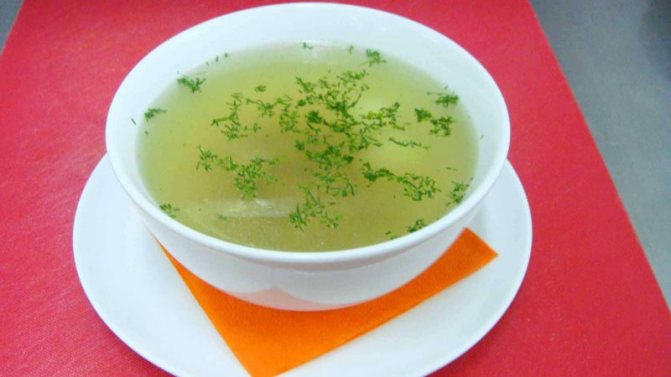
The diet should include lean dishes, broths from lean meat and fish, fresh herbs, vegetables, and cereal porridges. Eating pumpkin seeds has a beneficial effect; they improve intestinal function and peristalsis.
To prevent any of the known forms of parapsoriasis, there are no definitively developed methods of prevention, but, as with any disease, it is enough to follow the basic rules to reduce the occurrence of the disease itself and its relapses. For this purpose, it is necessary to avoid crowded places in the autumn-winter period in order to exclude frequent diseases of respiratory infections and influenza; Eat a balanced diet and strictly follow all the instructions of your doctor.
Under no circumstances should you self-medicate. Only a qualified and experienced specialist in this field can give adequate advice and provide significant rational assistance in the treatment of parapsoriasis and can distinguish this disease from other skin diseases with similar symptoms. Because if the treatment is not prescribed correctly, complications may arise that lead to detrimental consequences for the body.
A disease that manifests itself with symptoms of psoriasis and dermatitis of various natures is parapsoriasis. The disease is characterized by wide symptoms; the cause of its development is still unknown, although the first descriptions of the pathology date back to the beginning of the last century.
Nutrition for psoriasis for every day
A detailed table of foods that should not be eaten and are allowed in the diet for psoriasis.
| It is forbidden | Can |
| Fat meat | Lean meats. |
| Flour products. | Black or hard bread. |
| Tea, coffee, sweet compotes, unnatural juices, alcoholic beverages. | Natural juices, weak tea without sugar, fermented milk products. |
| Legumes, rice, semolina. | Oatmeal, buckwheat, millet. |
| Hot sauces, various marinades. | Vegetable oils, such as olive oil. You can use lemon juice to dress salads. |
| Smoked, salted, fried, canned products. | Steamed, boiled, stewed. |
| Chocolate, honey, candy, cookies. | Dried fruits, vegetables and fruits. |
You should formulate your daily diet in advance. To do this, you can go to stores less often to buy ingredients, so that you can soon prepare dishes that are allowed for the patient. Reviews about the diet for psoriasis are positive, as many notice that not only the therapeutic effect has improved, but also the quality of life, but your doctor will tell you which diet is right for you.
You should eat at least 4 times a day.
| Eating | Dishes |
| Breakfast | Porridge from buckwheat, millet or oatmeal, raisins, dried apricots, omelette, boiled eggs, black or hard bread, cheese, cottage cheese, natural juices, compotes, tea without sugar, dairy products without additives, apples or other fruits, cottage cheese and sour cream. |
| Dinner | Vegetable salads, lean meat, meat or fish cutlets, vegetable or chicken soups, borscht, beetroot, black or durum bread, herbal teas, compotes and juices. |
| Afternoon snack | Fruits, dairy products, compote. |
| Dinner | Fresh or processed vegetables, meat, black or durum bread, buckwheat, pearl barley, tea. |
You should drink at least 2 liters of water a day. Also, do not forget to take vitamins to restore metabolism, improve the functioning of internal organs and relieve symptoms.
| Day of the week | Breakfast | Dinner | Afternoon snack | Dinner |
| Monday | Millet or buckwheat porridge, any allowed fruit, green tea. | Soup, steamed or boiled lamb, vegetable salad with olive oil, compote. | Yogurt without flavorings and sugar, apple. | Vegetable salad with olive oil, black bread and natural juice. |
| Tuesday | Oatmeal porridge, a piece of cheese, green tea. | A piece of boiled or steamed fish, vegetable salad/soup, dried fruit compote. | A glass of kefir and one of the permitted fruits. | Buckwheat, vegetable salad, herbal tea. |
| Wednesday | Cottage cheese, green apple and tea without sugar. | Boiled or steamed turkey, a piece of cheese, green tea. | Cottage cheese and compote. | Pearl barley porridge, vegetables (cucumbers, herbs), berry tea. |
| Thursday | Millet or rice porridge, raisins, green tea. | Baked trout, buckwheat, a glass of compote. | Dried apricots, cottage cheese, natural juice. | Boiled chicken, lettuce and herbal tea. |
| Friday | Omelette, cheese, compote. | Borscht, steamed cutlet, vegetable and olive oil salad, a glass of tea without sugar. | Baked apples, a glass of fermented baked milk. | Turkey with stewed vegetables, vegetable salad and a few drops of lemon juice, tea without sugar. |
| Saturday | Oatmeal, durum bread, an apple and a glass of kefir. | Vegetable puree, fish cutlets, a piece of cheese, compote. | Boiled egg and green tea. | Stewed mushrooms, lettuce and tea without sugar. |
| Sunday | Oatmeal porridge, durum bread, a piece of cheese, tea. | Vinaigrette, fish or chicken cutlet, black bread, a piece of cheese and compote. | Apple, kefir or fermented baked milk. | Vegetable stew, boiled chicken, low-fat kefir, apple and green tea. |
Compliance with the prescribed diet for psoriasis allows you to stabilize
, get rid of unpleasant symptoms, improve intestinal motility. An important point is to increase the body's defenses, which reduces the number of relapses.
Cooking dishes not according to the rules, consuming inappropriate foods and drinks will minimize the therapeutic effect of the medications used.
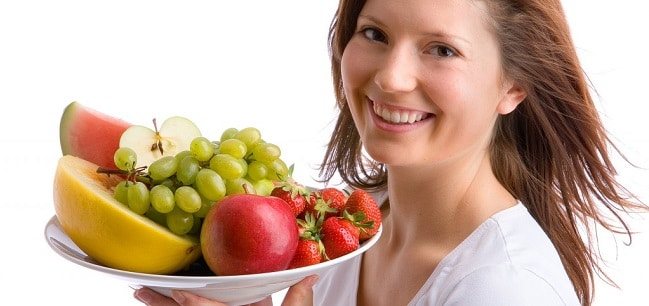
Moreover, non-compliance with the diet can aggravate the course of the disease.
The condition of a person diagnosed with psoriasis directly depends on the products he eats. He may not realize that certain foods aggravate the disease. Therefore, every psoriasis sufferer must know which foods should be present in their diet and which ones should be avoided.
| Limit | Exclude | |
| Fruits and berries | Cranberries, prunes, currants, blueberries, plums. | Citrus |
| Vegetables | Brussels sprouts, pumpkin, rhubarb, legumes. | Tomatoes, eggplants, peppers, potatoes. |
| Omega-3 fatty acids | Oil | Fatty meats and dairy products, fried foods, desserts |
| Nutritional supplements | Emulsifiers, preservatives, flavorings, etc. |
You should also minimize the following products:
- Vinegar.
- Margarine and spread.
- Semi-finished products.
- Sweets (halva, sweets, buns, chocolate).
- Canned food.
- Sausages.
- Baked, smoked, fried fish (herring, salmon).
- Crackers and potato chips.
- Fast food.
- Mayonnaise.
- White wheat bread.
- Sugar.
- Seasonings and spices.
- Nuts. Almonds, walnuts, peanuts, cashews (in the absence of allergies, the maximum amount per day is 5 nuts).
- Egg yolk.
- Fatty meat (pork, lamb) and lard.
- Soy sauce.
- Caviar (except red).
- Foods high in purines (yeast, dried porcini mushrooms).
The main part of the diet for psoriasis should be alkaline-forming foods, as mentioned earlier. They will help both speed up metabolism and cope with pathology.
List of useful products in this group:
- Vegetables. Radishes, celery, beets, cucumbers, greens, avocado, garlic, broccoli, asparagus, onions, pumpkin.
- Fruits. Bananas, grapes, kiwi, dates, peaches, apples, feijoa, figs, berries.
- Mushrooms.
- Olives.
- Peas and lentils.
- Turmeric.
A large amount of acid-forming foods in the diet can aggravate psoriasis, so they should be no more than 30%. It is recommended to include in your diet:
- Protein (egg white, chicken).
- Low-fat fish (pink salmon, hake, haddock).
- Juices. Lemon, diluted in water, celery, beetroot, spinach, carrot, mango, apricot, grape, pear (freshly squeezed only).
- Quail eggs.
- Low-fat dairy products.
- Cereals. Buckwheat, semolina (limited), corn porridge, wild rice, oatmeal.
- Cheeses. Gouda, Cheddar.
- Butter.
- Poultry meat, steamed, grilled, in the oven (chicken, turkey).
- Beef and cod liver.
Following all nutritional recommendations for psoriasis in general will help you get rid of extra pounds. But you should also adhere to the permissible daily caloric intake, do not overeat and regularly engage in physical activity.
There are products that can provoke an exacerbation or complicate the course of psoriasis. They should be avoided if you have a medical condition. These include:
- Nuts. They are a powerful allergen, so only in rare cases are they allowed in small quantities for psoriasis.
- Citrus. All types except grapefruit are prohibited. Especially you should not use the zest, which contains a large amount of essential oils. It is usually added when making juices in production, so it is better to avoid them.
- Smokedness and saltiness. The ingredients in the products disrupt the natural functioning of the intestines, resulting in a negative reaction on the skin.
- Caffeine, chocolate, sugar. These foods increase insulin and blood glucose levels, resulting in suppression of the immune system. This makes the body more susceptible to infections.
- Nightshade vegetables. Red peppers, tomatoes and eggplants are prohibited; potatoes are kept to a minimum.
- Berries. Most are allergens. You cannot eat strawberries, wild strawberries and raspberries. Limit currants, blueberries and cranberries.
- Meat. It is recommended to exclude red meat and any sausages.
- Dairy products. Due to increased production of cytokines, autoimmune symptoms worsen.
- Fish. Only low-fat, high-quality varieties are allowed for consumption, twice every seven days, 100-150 grams.
- Fatty and cholesterol-rich foods. Due to disorders of lipid metabolism in patients with psoriasis, they should exclude offal, saturated animal fats, black caviar, and egg yolk from their diet.
- White flour. Any baked goods made from processed wheat contain alloxan, which has an effect similar to sugar, that is, it increases insulin in the blood.
- Spices, spices. Most seasonings contain aromatic and essential compounds that aggravate inflammation. Vinegar, pepper, hot sauce, ketchup, cloves, mayonnaise, lemon zest, curry, mustard, anise, nutmeg, and cumin should be excluded.
- Synthetic and artificial additives. Emulsifiers, dyes, preservatives and leavening agents are allergens and are therefore prohibited for psoriasis.
- Unhealthy food. So-called empty calories, which do not contain sufficient minerals and vitamins. This list includes chips, crackers, crackers, fast food and the like.
- Corn. Added to many foods, you should always read the label and avoid eating foods that contain cornmeal, oil or syrup.
- Canned and pickled food. Such products, as a rule, contain preservatives that aggravate psoriasis.
We suggest that you familiarize yourself with Vishnevsky Ointment for internal pimple
Day 1
- Breakfast: oatmeal cooked in water, steamed omelette from one egg, tea.
- Snack: low-fat cottage cheese with apple and sour cream.
- Lunch: borscht in vegetable broth without meat, two hard-boiled quail eggs, dried fruit compote.
- Snack: green tea and baked apple.
- Dinner: hake fillet, steamed or baked with vegetables, chamomile tea.
- Snack: 200 milliliters of fermented baked milk or kefir.
Day 2
- Breakfast: pumpkin porridge, vegetable salad, ginger tea.
- Snack: Milk and blueberry smoothie.
- Lunch: lean meat goulash and vegetable soup, a piece of toasted bread.
- Snack: melon.
- Dinner: pasta with cheese, salad and green tea.
- Snack: a glass of kefir with toast.
Day 3
- Breakfast: buckwheat porridge, a cup of chicory, a few dates.
- Snack: banana.
- Lunch: stewed mushrooms and lean soup.
- Snack: cottage cheese casserole with dates and compote.
- Dinner: chicken meatballs with vegetables, herbal tea.
- Snack: 200 milliliters of fermented baked milk.
Day 4
- Breakfast: wheat porridge, two-white omelette, toast, tea.
- Snack: a couple of fresh or baked apples.
- Lunch: vegetable cutlets with turkey, lean borscht, tea with lemon.
- Snack: carrot casserole and lingonberry juice.
- Dinner: stewed vegetables, lean, steamed meat.
- Snack: a glass of kefir.
Day 5
- Breakfast: a glass of celery juice, toasted whole grain bread, buckwheat porridge.
- Snack: a handful of berries (blueberries, currants, lingonberries).
- Lunch: squash puree soup with cheese, compote, two pieces of toast.
- Snack: cottage cheese with sour cream.
- Dinner: pearl barley porridge, fresh salad with olives, chicken meatballs, tea.
- Snack: a glass of fermented baked milk and toast.
Day 6
- Breakfast: oatmeal with raisins, some fresh grapes, ginger tea.
- Snack: a glass of apple juice and a banana.
- Lunch: steamed fish cutlets, broccoli puree, two pieces of toast, green tea.
- Snack: rose hip decoction and apple.
- Dinner: boiled fish, vegetarian borscht, herbal tea.
- Snack: a glass of kefir or fermented baked milk.
Day 7
- Breakfast: two hard-boiled eggs, vegetable salad, rosehip infusion.
- Snack: two bananas.
- Lunch: rice soup with vegetable broth, grilled chicken fillet, slice of bread, herbal tea.
- Snack: low-fat yogurt.
- Dinner: steamed meat cutlets, vegetable salad, tea.
- Snack: a glass of kefir and toast.
Cleansing in 3 days
John Pegano
| What you can eat unlimited | Foods that have restrictions |
| Apricots and peaches, mangoes, persimmons, green apples and pears | Pineapple (only during remission), apples (excluding red varieties), cranberries, lingonberries, blueberries (allowed in limited quantities!) |
| Carrots, beets, all types of cabbage, celery, asparagus, green and yellow bell peppers, cucumbers, zucchini, pumpkin | Corn |
| Low-fat and low-fat cottage cheese, cheese 20–30% fat, kefir, fermented baked milk, low-fat milk, sour cream up to 10% | Chicken eggs (no more than 1 piece per week), quail eggs (no more than 3 pieces per week) |
| Buckwheat, oatmeal, pearl barley, bulgur, wheat groats, bran and cereals, pasta | Rice (preferably brown, but no more than 1-2 times a week), corn grits |
| Boiled fish | Fried and baked fish |
| Lean meat: chicken, turkey, rabbit | Lean beef or veal (no more than 2 times a week) |
| Vegetable oils: olive, sunflower, pumpkin, flaxseed, mustard | Corn oil |
Probable causes of development
Parapsoriasis, like psoriasis, is characterized by inflammation of the epidermis of a non-infectious nature, but the exact causes of the development of pathology are still unknown.
Scientists agree that the disease develops as a result of a specific autoimmune response to a certain irritant or condition of the body. The rash appears in response to the production of specific antigens by the immune system. This usually occurs when exposed to various viruses and bacteria. The cause of an autoimmune reaction can be any process occurring in the body, or any external influence (for example, allergens). Often, a rash appears due to pathologies of internal organs (kidneys, liver), as a response to a disruption in the functioning of the body as a whole.
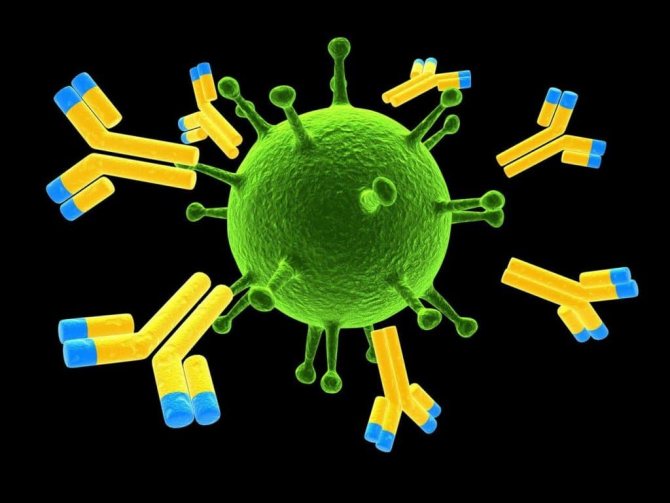
The disease develops due to the reaction of the immune system
Parapsoriasis can also be a secondary sign of systemic infection. There is a theory according to which rashes of this nature appear against the background of syphilis, herpes and tuberculosis.
Interestingly, a detailed study of the skin structure of patients with parapsoriasis revealed structural changes in the vessels and capillaries, which suggests genetic prerequisites for the development of skin inflammation. Patients experience an increase in the permeability of vascular walls, which is characteristic of infectious diseases. At the same time, parapsoriasis is not contagious.
If we take the autoimmune nature of the development of parapsoriasis as truth, the appearance of symptoms of inflammation of the epidermis may be due to:
- any cold;
- decreased immunity;
- viruses and bacteria;
- gastrointestinal pathologies;
- liver and kidney diseases;
- systemic infections;
- endocrine disorders.
The exacerbation of the disease can be influenced by the environmental situation, weather changes or the action of any other external irritant.
Types of disease
Parapsoriasis is a collective name for dermatitis with various symptoms, but an unspecified cause. In this regard, several clinical forms of pathology are distinguished, which are characterized by specific symptoms.
Guttate parapsoriasis
Allergic vasculitis, inflammation of the inner lining of the vessels of the epidermis or guttate parapsoriasis are all names of the same disease. Pathology is detected in patients over 30 years of age; such parapsoriasis does not occur in children. The disease worsens against the background of:
- ARVI;
- tonsillitis, including chronic;
- pneumonia;
- flu

An interesting feature of guttate psoriasis: men are less susceptible to this form of the disease. According to statistics, in 75% of cases the pathology is diagnosed in women. Characteristic symptoms:
- formation of dense small nodules;
- flat rash that does not rise above the surface of the skin;
- clear boundaries of each papule, bright hyperemia;
- absence of plaques, islands of inflammation, discomfort and itching.
The nodules are always of the correct shape - round or oval. When palpated, a dense structure of papules is revealed, but they do not rise above the skin. The color of the nodules is light pink, red, brown. Papules do not merge into plaques; each element of the rash has clear contours. Healthy skin between rashes does not become inflamed, there is no swelling or hyperemia.
In most cases, the development of this form of the disease begins in the trunk. The first nodules appear just below the armpits, then they spread to the chest, forming around the nipples and on the abdomen. The face, scalp and limbs are rarely involved in the inflammatory process.
Plaque parapsoriasis
Unlike guttate parapsoriasis, plaque parapsoriasis is a disease of middle-aged and older men. In most cases, the pathology is diagnosed after 45 years. There are small plaque and large plaque parapsoriasis.
Small rashes appear on the skin, which may not bother the patient for a long time. Under the influence of unknown factors, the process of changing the rash begins, as a result the disease acquires the plaque form of parapsoriasis - the appearance of medium or large islands of inflammation with a dense structure, predominantly pink. Plaques can take the shape of an oval, but in most cases they are characterized by clear contours of arbitrary shape. The color of the rash can vary from light pink to brown and bluish. The surface of the plaque is always covered with small flakes of keratinized skin.
Features of the course: acute and chronic parapsoriasis
The disease can occur in a chronic or acute form.
The chronic form of the disease is characterized by a positive reaction to the psoriatic triad, but this is only true for plaque parapsoriasis. Other types of chronic disease are accompanied by the constant presence of a rash. The rashes do not change, their number remains the same, new lesions do not appear.
The chronic form of parapsoriasis resolves after a few months, with light or dark spots appearing on the skin due to impaired pigment production.
Acute parapsoriasis is characterized by:
- rapid increase in body temperature;
- rapid increase in the number of rashes;
- symptoms of intoxication;
- weakness and loss of strength;
- enlarged lymph nodes.
In addition to nodules and plaques on the skin, in the acute form of the disease small foci of inflammation appear with a necrotic core in the center. As healing progresses, a scar appears at the site of such formation. As a rule, purulent blisters on the skin are large in size - up to 1 cm in diameter.
In acute parapsoriasis, the elements of the rash can be represented by blisters with pus or bloody, inflamed pimples. The peculiarity of this form of the disease is its rapid progression followed by subsidence of symptoms. The acute form lasts no more than three weeks, then the rash goes away and scars form in its place. The pathology may recur.
The main directions of the Fire and Pegano diets
To numerous questions about what diet for psoriasis helps to cope with an acute attack, Ogneva and Pegano answer in completely opposite ways. They have fundamental differences and completely different approaches to dietary nutrition for psoriasis.
The diet, in accordance with the principles of Pegano, allows the addition of citrus fruits to food, and therapeutic nutrition for psoriasis according to Ognevaya excludes them completely, considering the consumption of a small amount of grapefruit acceptable.
However, both nutritionists insist that you can only eat foods that affect a person’s psycho-emotional state by ensuring the correct balance of acids and alkalis. Therefore, for psoriasis, the diet consists of 70% highly alkaline foods, and the remaining 30% belongs to acid-forming foods.
Nutrition for psoriasis according to the principles of Pegano, provides for the mandatory addition of cereals (wheat, barley, bran, buckwheat). Seeds (flaxseed, sesame, pumpkin and sunflower) should be added to your daily diet. You should eat steamed fish for a week. According to the Pegano diet, the body produces the required amount of acids.
The Fire diet for psoriasis is based on other principles. In particular, the Pegano diet leads to excess acid formation. Ogneva recommends eating a lot of buckwheat, which has a beneficial effect on the body. Proper nutrition is especially important for women with psoriasis. Buckwheat has a good effect on the skin. However, Ogneva, like Pegano, believes that the product used serves to ensure a balance between the content of acids and alkalis.
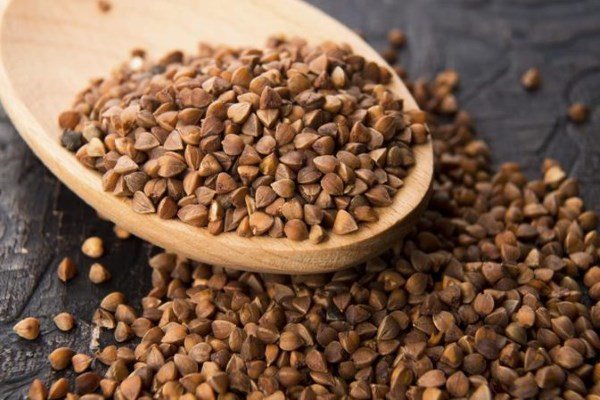
For psoriatic plaques in the head area, foods that irritate the digestive system and liver are excluded. For eczematous manifestations in children, in addition to treating psoriasis with diet, general therapy with restoration of immune defense is required. At the same time, the child needs to eat properly, since nutrition plays a major role in the supply of all necessary substances. In other cases, as a rule, the diet is similar to other forms of psoriasis.
Establishing diagnosis
The diagnosis of parapsoriasis is made by a dermatologist based on an examination of the patient, laboratory examination of skin cells in the area of inflammation and a general blood test. Making a diagnosis is difficult due to the similarity of the symptoms of parapsoriasis with various dermatitis and mycoses.
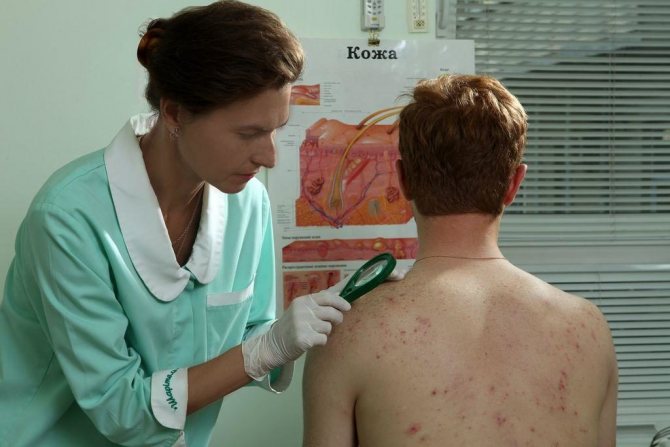
Even a specialist can easily confuse parapsoriasis with other pathologies
Treatment principle
First of all, it is necessary to identify the cause of the disease. Since exacerbation of symptoms in most cases is caused by some internal pathology, it is important to treat the root cause. This may be an endocrine disorder, exacerbation of a chronic disease, pathology of internal organs, or decreased immunity.
For guttate and lichenoid parapsoriasis, antiseptic agents are used to treat each element of the rash to avoid infection of the epidermis. In the treatment of parapsoriasis, regardless of its form, it is important to normalize blood circulation to accelerate skin regeneration. For this purpose, nicotinic acid and drugs to strengthen blood vessels are often prescribed.
General restorative therapy plays an important role in the treatment of parapsoriasis. Patients are advised to take immunostimulants, herbal preparations with a general strengthening effect, and vitamin and mineral complexes.
For chronic forms of parapsoriasis, physiotherapeutic treatment (PUVA therapy, sulfur and iodine baths) is practiced.
Traditional methods of treatment
You can speed up recovery and restoration of the skin using folk remedies. For this purpose, compresses are used from infusions of medicinal herbs - chamomile, calendula, sage. Aloe has a good effect. It is used both to treat rash elements and as a general tonic, taking an infusion of this plant.
Another natural remedy to boost immunity is echinacea tincture.
It is recommended to take baths every other day with the addition of a decoction of chamomile, calendula and celandine, taken in equal proportions. Two glasses of decoction are enough for a bath. The procedure time is 15-20 minutes.

Baths with decoctions of medicinal herbs reduce unpleasant symptoms
Diet for parapsoriasis
Since relapses of the disease are often caused by impaired immunity, nutrition plays an important role in the treatment of parapsoriasis. Patients are prescribed a gentle diet based on the following food groups:
- any porridge;
- low-fat broths;
- fish;
- dietary meat;
- fruits;
- fresh greens.
Pumpkin, pumpkin seeds and their oil should be included in the diet. For parapsoriasis, treatment requires avoiding any processed foods, smoked meats and sausages, and allergenic products. Sweets, coffee and tea are excluded from the diet.
The diet for parapsoriasis is not strict, the main thing is to exclude any foods that increase the load on the liver, kidneys and gastrointestinal tract.
There is no specific prevention of the disease, but a healthy lifestyle and supporting your own immunity will help reduce the frequency of exacerbations.
>
Nutrition rules
The diet should be followed based on the following rules:
- You should not eat highly allergenic foods that can provoke an allergic attack (cocoa, strawberries, citrus fruits, etc.);
- it is necessary to quit smoking, alcohol and drugs;
- food should be divided into several doses (up to 5-6 times during the day);
- the use of products containing preservatives and dyes, as well as smoked meats and various marinades is excluded;
- maximum restriction in salt intake is required;
- It is recommended to consume fiber contained in fruits and vegetables;
- For cereals, it is preferable to prepare porridges from buckwheat;
- it is necessary to consume fermented milk products.
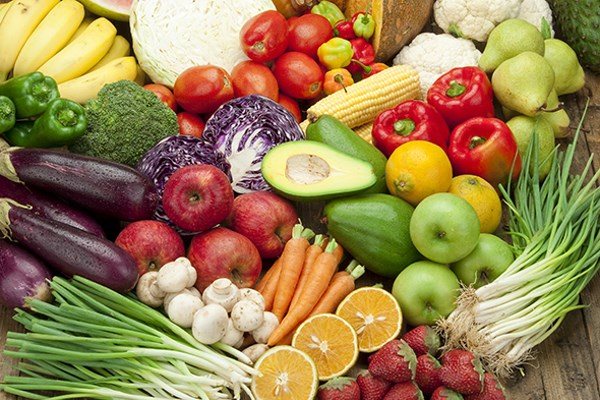
In addition, the daily diet should include vegetable oil, especially olive oil, as it has a beneficial effect on the digestive system and replenishes the required amount of fatty acids in the patient’s body. When asked by patients whether it is possible to drink strong tea or coffee with psoriasis, nutritionists answer unequivocally: you should not drink strong tonic drinks, as this contributes to the increased appearance of psoriatic plaques on the patient’s body.
There are several therapeutic diets used in the general treatment of the disease, but the most popular are the Pegano and Fire diets.
